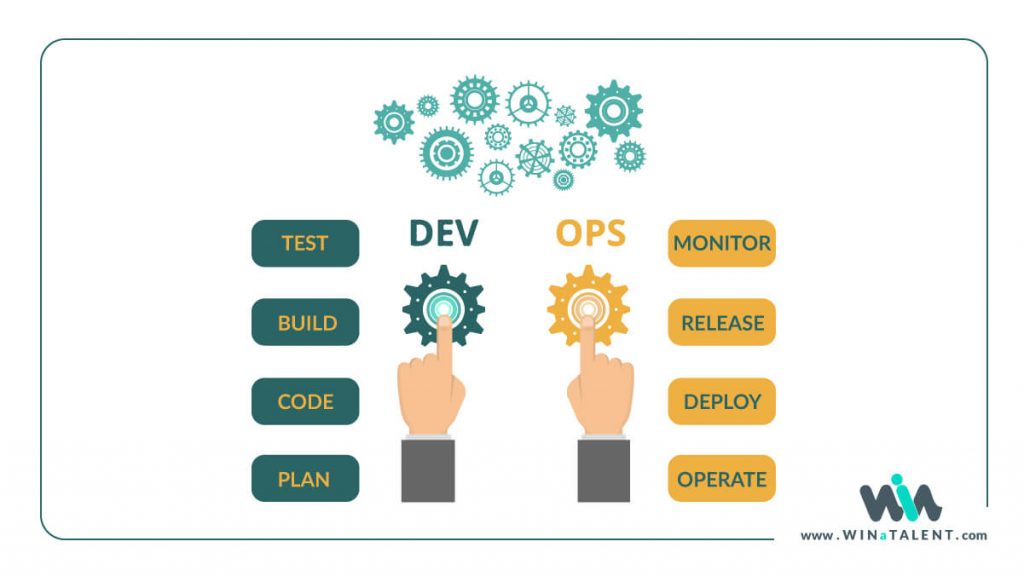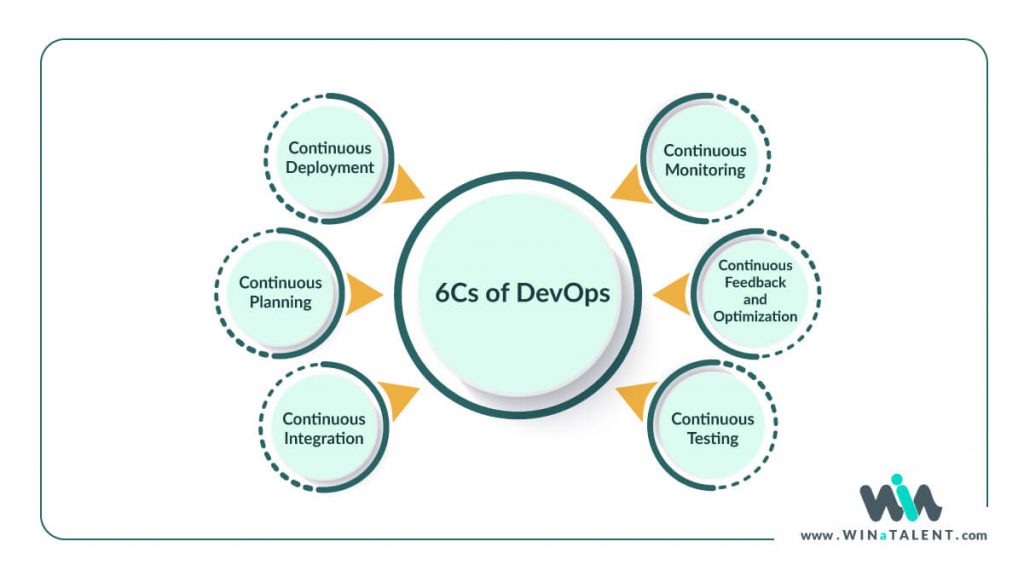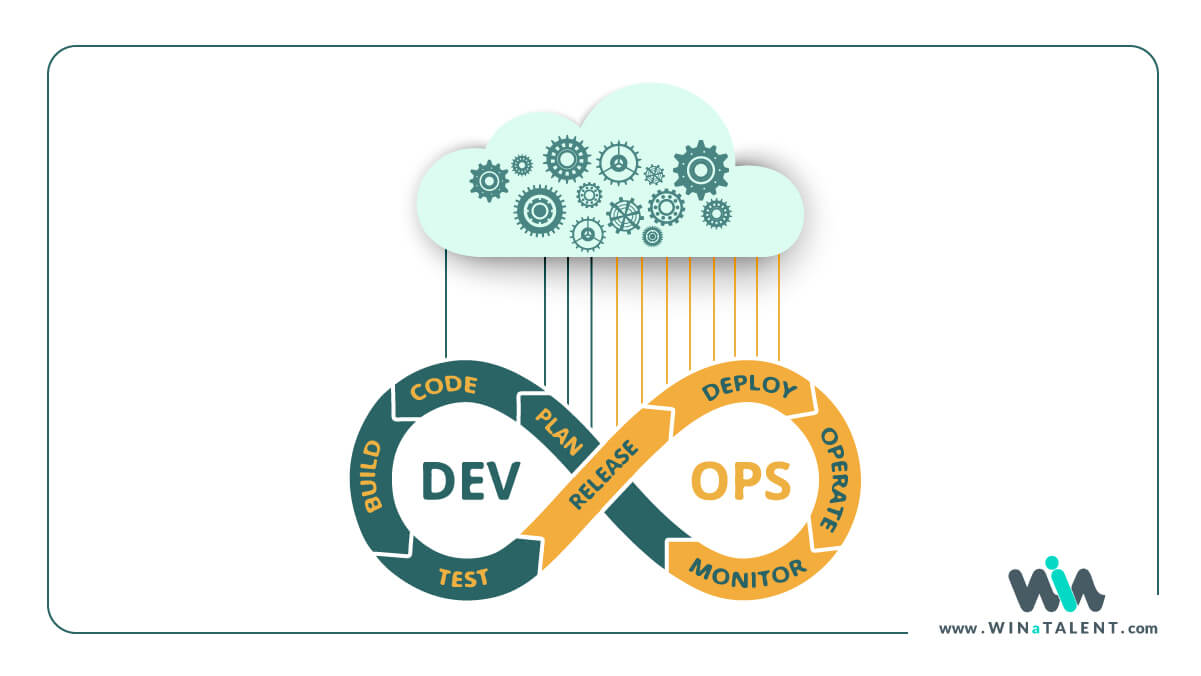For the past couple of years, if you hadn’t been living under a rock (!), you most definitely heard about DevOps. In this post, we will talk about what DevOps is, why it is trendy in the software development and IT world, and why you need to apply it in your app development journey.
But first thing first:
What is DevOps?

According to AWS, “DevOps is the combination of cultural philosophies, practices, and tools that increases an organization’s ability to deliver applications and services at high velocity: evolving and improving products at a faster pace than organizations using traditional software development and infrastructure management processes. This speed enables organizations to better serve their customers and compete more effectively in the market.”
According to our previous post, Application Lifecycle Management: The What, The Why, and The How, software development, especially the application development industry, demands a high-quality production at high speed.
DevOps is a practice that combines the traditional software development team (Dev) with the IT operation team (Ops) and makes the system development cycle shorter and continuous.
Historically, the development and operation functioned in siloes. But at its core, DevOps is a continuous practice; therefore, the infinity loop symbolizes DevOps. In contrast with Agile, DevOps is not just a methodology. As we mentioned above, DevOps counts as a culture, a movement, and a philosophy that the whole team needs to adjust to.
DevOps has six phases and each of these stages need their tools, processes, and capabilities. The right side of the DevOps infinity loop represents operation, and the left side represents development.
Six Cs of DevOps:

According to DevOps philosophy and approach to building superior quality software quickly and reliably, the system’s development lifecycle needs to get shorter while still delivering the features, bug fixes, and frequent updates aligned with the business goals and objectives.
The DevOps lifecycle phases are called the six Cs.
First C, Continuous Planning:
The planning stage is where the entire project’s team developers, project managers, business analysts, operation staff, and stakeholders find and build common ground. This common ground is where the project or application scope, identity, outcomes, and resources get decided on.
Second C, Continuous Integration or CI:
In DevOps, the approach to code-writing needs to be collaborative. Because the written code is seamlessly integrated with the other team, the codes become error-free and combined with the last development code. With integration in code-writing, continuous delivery must get ensured as well.
Third C, Continuous Testing:
In the software or application development lifecycle, testing is a crucial stage to success. Continuous testing helps to identify the problems, bugs, and market values. To build a high-quality, high-speed product, DevOps requires early and iterative testing. Testing in DevOps should be considered an integrated part of development.
Fourth C, Continuous Deployment or CD:
Continuous deployment means the written code that passes the automated testing phase automatically gets released to the production environment. CD helps with coe3 implementation reviews and easily developer check-ins.
Fifth C, Continuous Monitoring:
Before the app or software is deployed to the end-user, with DevOps’s continuous monitoring, the issues are identified and resolved faster and better. This approach helps stabilize the development process regardless of human interactions. With constant tracking, you can address the changes, errors, and mistakes spontaneously and in real-time.
Sixth C, Continuous Feedback and Optimization:
Feedback is where you receive an immediate response from your customer for your product. This C helps you modify the features according to your customers’ needs.
Why is DevOps So Trendy?
According to APPDYNAMICS, in 2022, the DevOps software market will reach $6.6 billion. The market was $2.9 billion in 2017. The reason behind the popularity of DevOps adoption are:
- Business investments in software-driven reform.
- Choosing microservices-based architectures and correlated development methodologies.
- Enhanced investment by CTOs and CEOs in applying collaborative, computerized application development and operational processes.
What Are DevOps’s Benefits and Challenges?
The table below shows the benefits and challenges of adapting to DevOps:
| Benefits | Challenges |
| Automatize structures maximize the efficiency of collaboration between multiple teams | Underestimation of the requirements and the workload |
| DevOps improves the business as a whole; in other words, DevOps aligns the whole business with customer and business needs | How to identifying the best metrics to drive intelligent automation decisions. |
| With DevOps, The speed and stability of software development and deployment improve | Joining the previously siloed teams of development and operation |
| DevOps brings greater Agility to the business | Budget limitation and difficulty of multiple environments management |
| Strategic DevOps view for continuous integration and deployment ensures the flexibility and adaptivity of system production and pre-production | Difficulty in the articulation of business values because of teams’ resistance to change and their inertia |
| DevOps focused on the essential factor in the development team: The people | Setting unrealistic expectations and the alignment of metrics with business goals |
DevOps in App Development:
The increase in mobile users and the steady growth rate in the mobile app industry demand better and faster app development. DevOps comes into the picture to provide solutions and focus on these aspects.
DevOps is a modern strategy, which facilitates seamless application delivery from conception to production.
But why is it beneficial for mobile app developers to adapt to DevOps?
Lower the time of release
With DevOps tools, the real-time collaboration across the team, especially between operation and delivery, becomes more efficient. Close cooperation and communication lower the time for a design-development perspective. DevOps’s iterative cycle helps with the code deployment, regression tests, and quickens the phase by phase release.
Efficiency in the resources use
DevOps’s heavy use of automation leads to resource efficiency. Source code management, platform development, and testing are all automated functions to enable frequent releases. Hence the operation and development teams work seamlessly, the whole cycle of build, test, deliver, and update release is easily achievable.
Elimination of inefficiencies and bottlenecks
DevOps aligns tools, processes, and practices with improving a transparent and efficient development process. Consequently, several inefficiencies get eliminated. For example, because of automation, manual intervention stops happenings. Plus, with the close communication between the team members, the workflow is stable, and the whole team has a sense of ownership.
Better feedback
There is a considerable need for instant reposts and feedback from the users in mobile app development and release. Accordingly, the transparency of stakeholders gives the app development team a convenient way to detect, troubleshoot, fix and optimize the users’ experience.
Conclusion:
The variety of devices and operating systems in the mobile platform is a serious concern for developers. Regularly, the mobile app developers need to consider different release dates, version supports, and devices. For these reasons, DevOps’s six Cs are a better and more convenient approach to regular testing, fast delivery, and constant maintenance and update release.
We at WINaTALENT will identify your development needs based on your project. We find the shortest, most efficient, and convenient way to your perfect development.

This was a useful informative piece on DevOps. I am curious what kind of projects are using this and if it is only beneficial to mobile developers..
This is a great inspiring article.I am pretty much pleased with your good work.You put really very helpful information abot devops
Thank for your writting! It is easy to understand and detailed. I feel it is interesting, I hope you continue to have such good posts about devops.